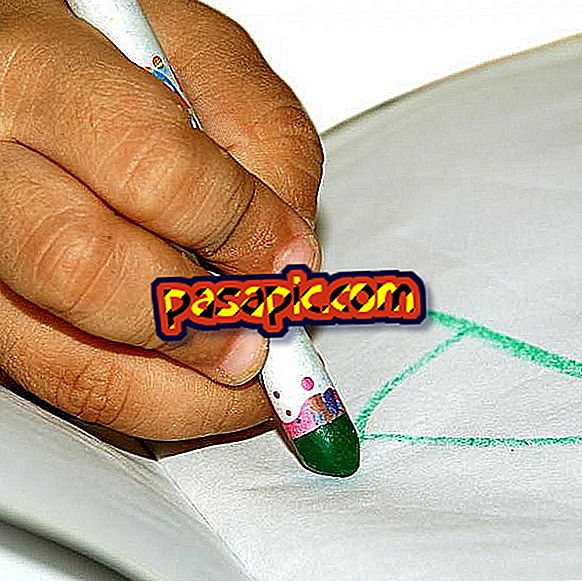Why do not we draw the heart as it is

You have seen it millions of times, surely you have drawn it many others: on paper, in notebooks or in chats. Whether in more or less elaborate drawings or in emoticons, even engraved in ink on the skin always has the same meaning. The heart is a universal symbol that represents love, but in reality this drawing does not look too much like our organ. Have you ever wondered why we do not draw the heart as it is ? What meaning does the drawing of the heart have? What is the origin of the form or who invented it?
There are so many ways of representing love as possible ways of loving, but over time, the classic drawing of the heart has become the most popular. Given that many theories have arisen throughout history, in the following article we will explain the most interesting ones.
Why we draw the heart like this: the Egyptian theory
According to the information we have to date, the first civilization that used a symbol similar to the one we use today to represent the heart was the Egyptian. By all it is known that the Egyptian writing was hieroglyphic, that is to say, that they used drawings and symbols to represent the words. The ideogram used by the Egyptians to represent the heart, and which you can see in the photograph below, still retains a certain resemblance to the original heart, in fact, you can see the atria represented, but it also remembers the symbol so famous today in day with which we draw the heart.
It is important to know that for the Egyptian civilization the heart was considered the most important organ of the body. They believed that in this area of the body was where both the soul and the human mind were, in fact, once a person died, their heart weighed against the feather of the Goddess Maat to know if she had been good enough to to be able to enjoy eternal life.

Meaning of the drawing of the heart: Greek theory
Although many people do not know, this is one of the most plausible theories about when and where the shape of the heart that today is used millions of times throughout the world. This theory says that its origin is found in Cyrene, a colony of the ancient Greek civilization located in what is now Libya. The case, is that in archaeological remains of the area coins have been found minted with this symbol .
In reality, these engravings were not of hearts, but were seeds belonging to the plant Silphium, a plant that became extinct, but that was very popular and intensely used during those centuries, especially by the Egyptian, Greek and Roman peoples. Its properties were multiple, the Silphium was used as a perfume, as a spice, to grow hair, as a pain medication, but it was the Romans who gave it the use that would make it more popular: as a contraceptive .
The abortive properties of this plant made it highly appreciated in Roman cities, especially by young couples who could enjoy love with some freedom and without fear of undesirable consequences. This is reported in the chronicles of the historian Pliny "El viejo", in which he explains that his resin was used to soak cotton and make a kind of pill that, placed in the vagina, to lower menstrual flow. So high was its effectiveness that it was commonly used as a kind of precursor to the morning after pill . Currently it is believed that the origin of this effectiveness was due to the fact that this plant had a very high estrogen composition.
But what does this have to do with the symbol of the heart we draw? For the seeds of the Silphium were very similar to how we draw the heart these days, in addition, since it was a facilitator of intimate relationships, this plant was quickly related to love. However, it was not until the middle age that this symbol began to gain the popularity it enjoys today and, although there is no 100% scientific fact that can prove its origin, this theory is certainly plausible.

Where does the shape of the heart come from: Catholic theory
The Catholic Church has also said his about the origin of the symbol of the heart that we use today and that is so present in the decoration of thousands of teenage folders around the world. The reality is that this symbol is very similar to the Sacred Heart of Jesus as it is represented in many paintings throughout history. This has the form and attributes described by St. Margaret, who was a nun during the seventeenth century and to whom the Sacred Heart of Jesus appeared.
The reality is that perhaps its popularity made this symbol internationalized and was gaining followers, however, Santa Margarita did not have the vision until 1673, or what is the same, many years after the first time this symbol was documented. This means that the origin is not found in this theory.
Who invented the heart icon
We could go on like this, enumerating theories one after another, among all of them, one of especially original and that could be true partly comes from the Middle Ages and says that the fact that the heart is drawn in this way is why it looks a lot like the heart of the cow . If we take into account that the heart shape of this animal was widely known by people while few had seen a human heart, it made it begin to draw in this way by mistake.
But if you want to know who invented the icon of the heart or when this drawing became so popular, you will be disappointed. The most realistic theory that can be closer to the truth is that it has been nothing more than a reinterpretation carried out by different artists over the years that, due to its aesthetic, has made its fortune. The theory that most convinces is that it is a schematic, practical representation, to be able to draw an organ that in many cultures has a very deep meaning and that is very difficult to represent in a realistic way.
On the other hand, a realistic heart is surely at the antipodes of the romantic. Thus, the heart as we draw it is a symbol that schematically represents the organ of love, but it does not have to have a definite origin.


